Arrangeball Gaiden: A Little Variation with Bandai's Arrange Fever
So I’m doing some work to try to bring an old Arrangeball machine back to its former glory. But let’s say you don’t want to go through all that, or just don’t have room for such a big device. Well, of course, there are other ways to get your arrange fix– one of which is a classic LCD game. Is it a Game and Watch? No. It’s not a watch.
The Arrange Fever
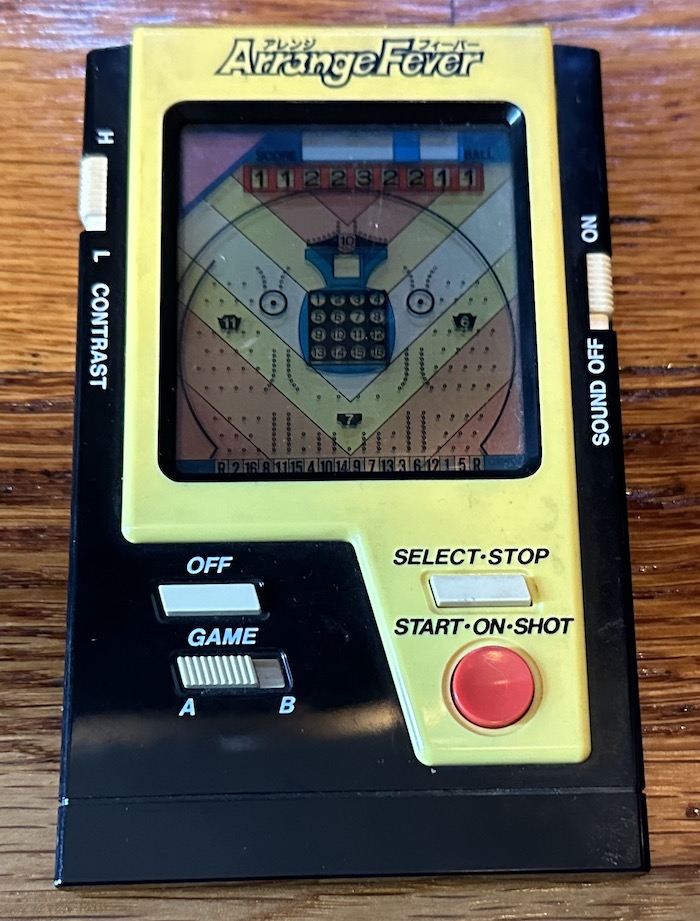
The Arrange Fever is a cute little handheld, pretty typical of 1984, when this unit seems to have been made. Unfortunately, unlike other Bandai pachinkos it’s just a button for shooting, rather than any sort of knob or flipper equivalent.
But what makes this unique is two things:
- It’s arrangeball, not pachinko. Notice that the grid is very much like my big Satomi machine, complete with the four center numbers having special pockets surrounding the grid.
- It doesn’t work! (I guess this also makes it a lot like my Satomi machine in that sense)

So you might immediately notice the battery compartment is missing. Unfortunately, this game like so many others had some batteries left in it that swelled up, damaging the back cover. Even worse, in this particular game, the battery cases use delicate free-floating pieces of metal in soft plastic keeping it vaguely in place. With the delicate balance ruined, fitting LR44 batteries and having them power the machine is pretty difficult.
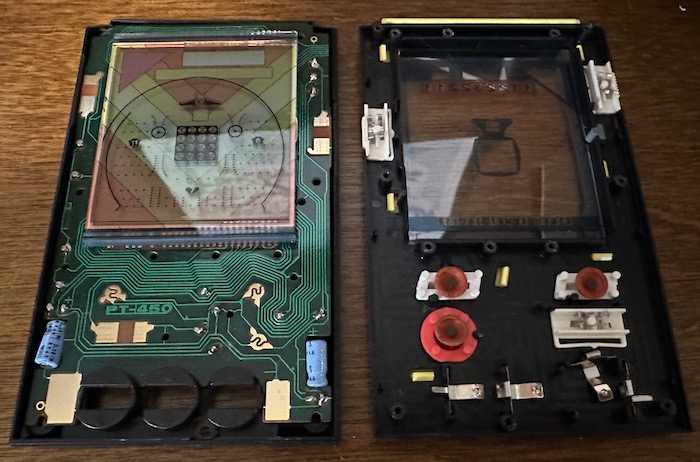
While we’re here, you might wonder where the chip is. Well, just like the Soviet Game and Watch, it’s delicately placed in a hole in the PCB right behind the screen. Unlike the Soviet machine, the speaker isn’t placed in front of it.
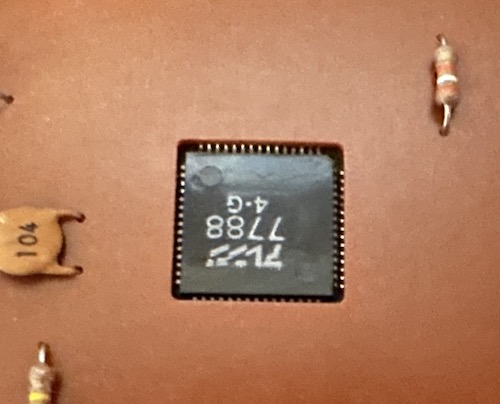
I assume this is some sort of 4-bit microcontroller like the Game and Watch, but I don’t know for certain without decapping it. My setup doesn’t allow for that, and in any case, I want to make the machine playable, while decapping would destroy the chip.
Thankfully this proved to be an easy fix. LR44 batteries have a nominal voltage of 1.5V, just like AA batteries. With three batteries in series, it’s quite easy to find pre-made battery holders that will take three batteries, and I just soldered them to the terminals. It looks ridiculous:
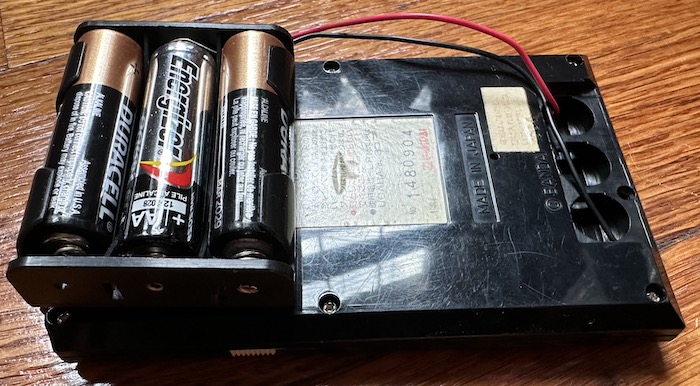
But does it work?
Yes!
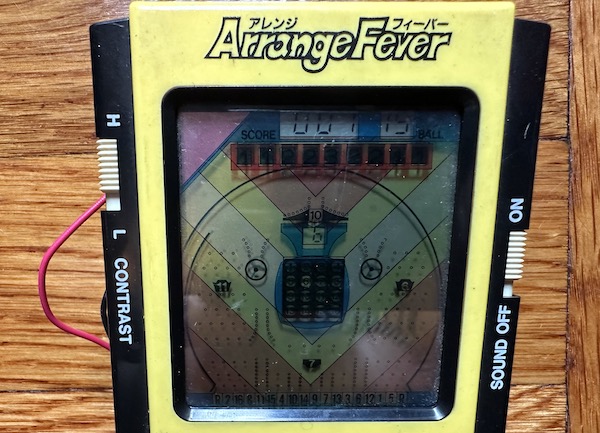
It plays alright; you can hold down the launch button for longer and the ball usually goes farther, but it doesn’t feel like you have that much control. The LCD segments lighting up the numbers (“6” is lit up in the screenshot) look pretty bad in the photo but are very visible in person.
This machine is from 1984, when classic arrangeball was on its way out. So it does feature a random element, with the number below the “10” pocket and above the grid being chosen from a shuffle to light up when it is triggered.
I wanted to go into more detail on how this machine works, because there’s really not much on it on the English-speaking internet, but I hit a problem: today, just a day after doing the soldering, one of the batteries I put in has already started leaking onto the brand new compartment:
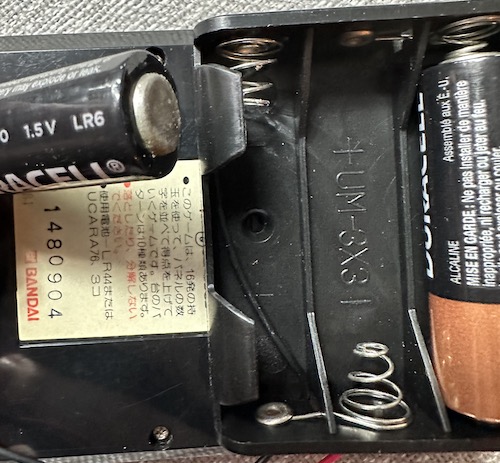
Next time I’m just buying a bench power supply and powering it from that. Don’t ever leave a battery unattended, you can’t trust them at all.
